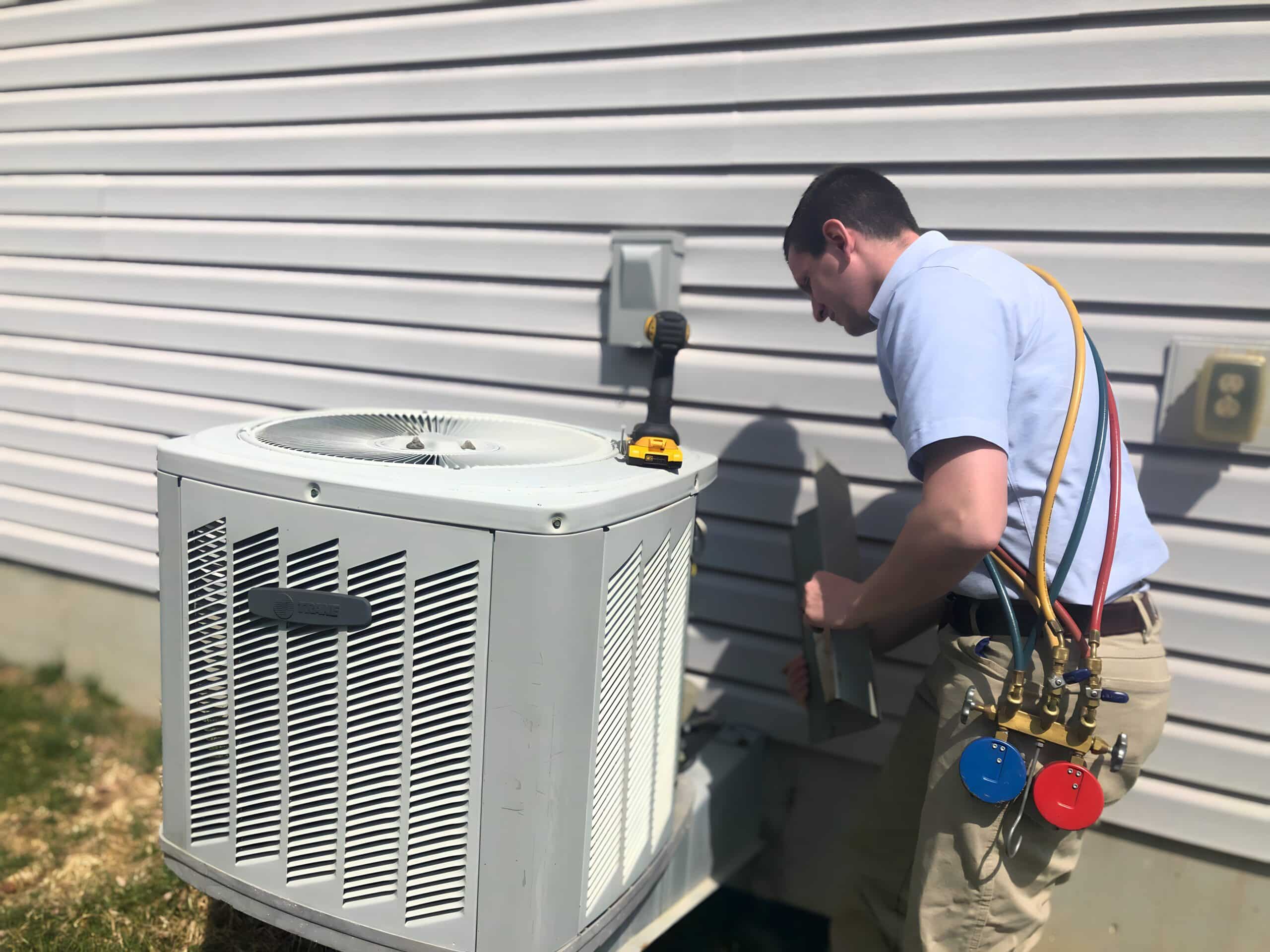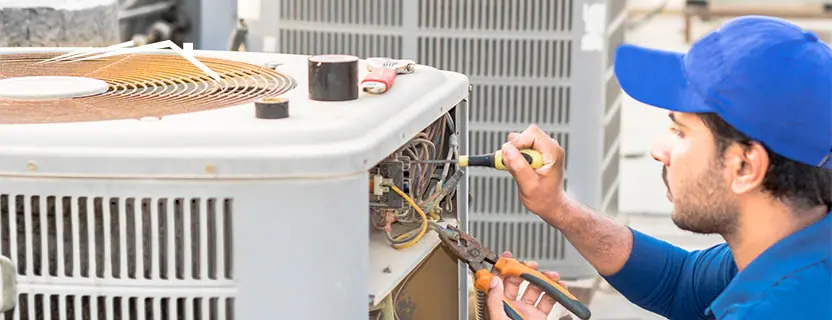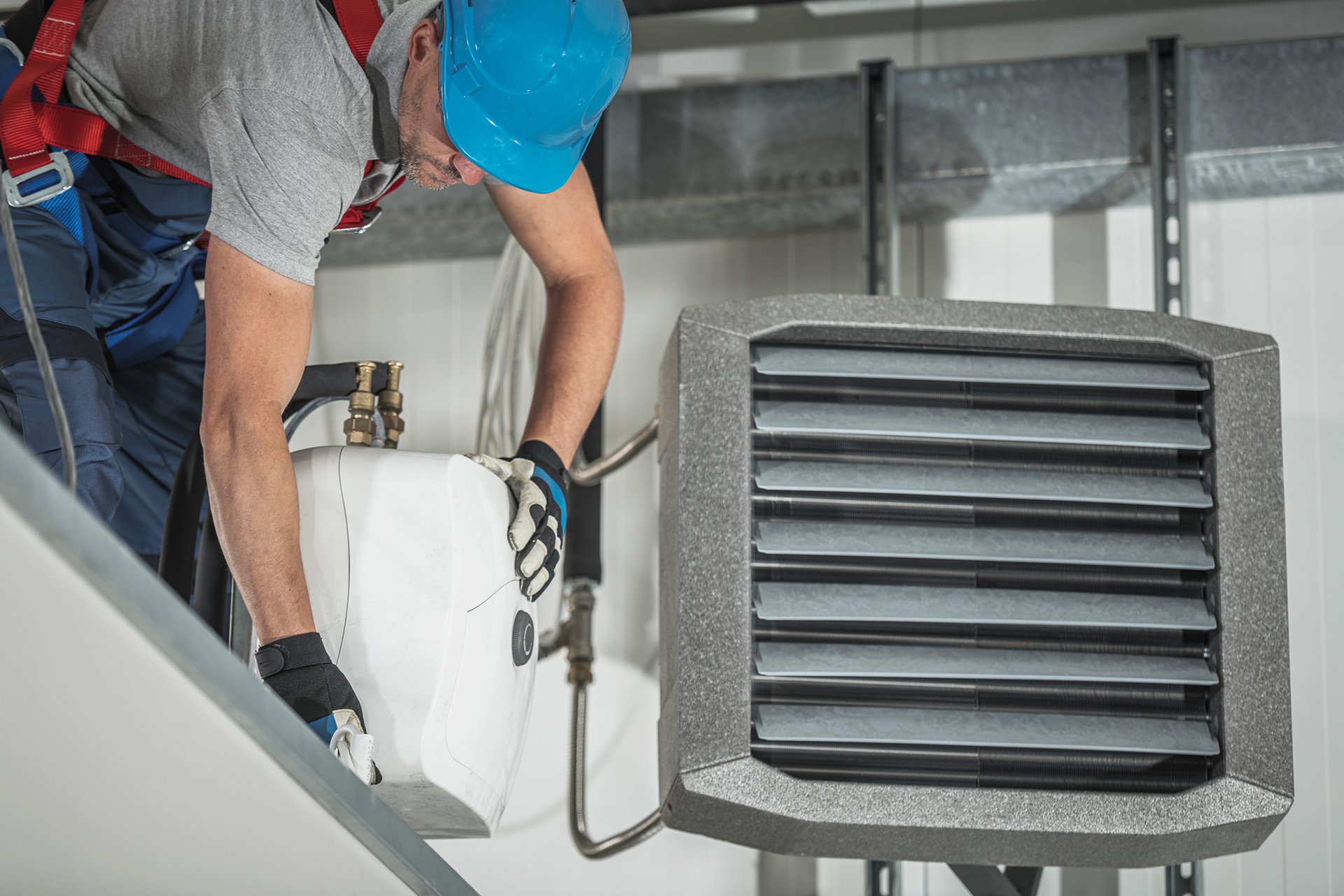Evaluating Brands for heat pump installation ooltewah tn
Evaluating Brands for heat pump installation ooltewah tn
Blog Article
Just How a Warmth Pump and Heating System Collaborate to Optimize Your Home's Home heating Performance
Recognizing just how a heatpump and heater job with each other is important for home owners looking for efficient heating services. Each system has its staminas, giving a balanced approach to home convenience. The heatpump stands out in moderate temperatures, while the heating system supplies quick warmth throughout extreme cold. This harmony not only lowers power prices but additionally improves the life expectancy of both devices. What factors influence this cooperation, and just how can house owners optimize their benefits?
Recognizing Warmth Pumps: How They Work
Although several individuals may be unfamiliar with their inner operations, warmth pumps play an essential duty in contemporary heating unit. These tools operate by moving heat from one place to another, making use of the principles of thermodynamics. In chillier months, a warmth pump removes warmth from the outdoors air, ground, or water, and transfers it inside to warm up the home. On the other hand, during warmer months, it can reverse the process, functioning as an ac unit by removing warmth from inside to the outside.Heat pumps consist of an evaporator, compressor, expansion, and condenser valve. The cooling agent within the system takes in warm as it evaporates at low temperature levels and stress. The compressor after that raises the pressure and temperature level of the cooling agent, allowing it to release warmth as it condenses. This efficient process can substantially decrease energy consumption compared to standard home heating methods, making heat pumps a sustainable choice for environment control in homes.
The Function of Heating Systems in Home Home Heating
Heaters play a crucial function in home heating by providing a dependable resource of heat during the cooler months. They run by producing heat through burning or electrical resistance, dispersing it throughout the home through air ducts or radiant systems. The performance of a heater is often measured by its Yearly Gas Use Performance (AFUE) ranking, which suggests exactly how properly the device converts fuel into heat.Furnaces can make use of numerous energy sources, consisting of gas, gas, oil, or power, permitting house owners to choose the most appropriate choice for their demands. Unlike heatpump, which may battle in extreme cool, heaters keep consistent performance, ensuring that interior temperatures continue to be comfy no matter of outdoor problems. Additionally, modern-day heating systems commonly come outfitted with advanced technology, such as smart thermostats and variable-speed blowers, enhancing their performance and responsiveness. This convenience makes heaters a crucial component in all-inclusive home heating strategies.

Advantages of Making Use Of Both Systems Together
Combining the strengths of both heaters and heatpump can result in a much more reliable and reliable home heating remedy. Making use of both systems allows home owners to capitalize on the heat pump's power efficiency throughout milder temperature levels while depending on the heater for even more severe cold problems. This dual approach can significantly lower power expenses, as warmth pumps consume less power than standard heating methods when temperatures are moderate.Additionally, utilizing both systems together can enhance comfort degrees in the home. Warm pumps can give consistent, even home heating, while heating systems can swiftly raise ambient temperature levels when required. Moreover, the combination of both systems can expand the life expectancy of equipment by minimizing wear and tear on each system, as they share the work. Ultimately, home owners can take pleasure in a balanced, cost-effective home heating option that adjusts seamlessly to differing climate condition, ensuring a warm and welcoming home throughout the cold weather.
How Heat Pumps and Furnaces Complement Each Other
When homeowners incorporate heatpump and heaters, they develop a complementary furnace that optimizes effectiveness and convenience. Heatpump run by moving warmth from the outside air or ground, making them very efficient in moderate climates. They succeed during milder temperatures, offering cost-effective heating. Alternatively, heating systems produce warmth with combustion or electric resistance, delivering strong, immediate heat throughout severe cool conditions.The combination of these two systems enables for dynamic changes based on temperature variations. Throughout warmer months or milder winter season days, the heatpump can take the lead, preserving energy and decreasing prices. As temperature levels decline, the heater can effortlessly engage, guaranteeing constant heat throughout the home. This harmony not just optimizes energy use however additionally enhances the life expectancy of both systems, as each unit operates within its ideal performance range. With each other, they produce a balanced atmosphere that adjusts to varying environment demands.
Enhancing Efficiency: Tips for Homeowners
Property owners can boost their home heating efficiency with numerous sensible approaches. Developing a regular maintenance timetable, incorporating clever thermostat modern technology, and executing effective insulation and securing options are crucial steps. These measures not only improve comfort yet also lower energy prices.
Normal Upkeep Schedule
To guarantee maximum heating performance, establishing a go to my site normal upkeep timetable is essential for any kind of home. Property owners need to prioritize regular evaluations of both heat pumps and heating systems to identify peak performance. This includes altering air filters every one to three months, as clogged up filters can substantially minimize effectiveness. Additionally, organizing professional upkeep at the very least yearly permits professionals to determine and attend to potential issues before they escalate. Property owners must additionally cleanse the heatpump's outside device to stop particles accumulation that can impede air flow. By adhering to a regular maintenance schedule, home owners not only improve read more their furnace' efficiency but likewise prolong their life-span, bring about higher comfort and reduced power expenses throughout the cooler months.
Smart Thermostat Assimilation
Integrating a smart thermostat right into a home furnace can substantially enhance power performance, particularly as it enables for precise control over temperature level setups. These tools can find out the property owner's routine and choices, automatically adjusting the temperature to maximize comfort while reducing energy usage. They can reduce home heating during times when the home is vacant, minimizing unnecessary consumption. Lots of clever thermostats additionally give real-time power use information, making it possible for property owners to make informed choices regarding their home heating behaviors. Additionally, remote gain access to through smart device applications enables customers to adjust setups from anywhere, guaranteeing the home is cozy upon return. On the whole, wise thermostat assimilation not just improves convenience but substantially contributes to energy cost savings and effectiveness.
Insulation and Securing Solutions
Smart thermostats play an essential duty in energy efficiency, however their effectiveness can be greatly improved by correct insulation and sealing solutions. Home owners ought to prioritize insulating floorings, wall surfaces, and attics to reduce warm loss. Premium insulation products, such as spray foam or fiberglass, can substantially improve thermal resistance. Furthermore, sealing voids around home windows, ducts, and doors prevents chilly air infiltration and heat escape. Weatherstripping and caulking are efficient approaches for resolving these leakages - furnace replacement. Routine examinations for air leaks, together with using blower door tests, can help identify trouble areas. By purchasing insulation and sealing, property owners can enhance the performance of their heating unit, eventually leading to lowered energy intake and reduced energy bills
Common Myths Concerning Warm Pumps and Furnaces
What misunderstandings border heatpump and heaters? Lots of people mistakenly believe that heatpump are inefficient in cooler environments. In truth, modern-day heatpump are designed to operate successfully also in low temperature levels, giving dependable heating throughout wintertime. Another common myth is that heaters are constantly much more effective than heat pumps. However, this depends on the specific energy resources and efficiency ratings of the units in question. Some might likewise believe that utilizing both systems concurrently is unnecessary, but as a matter of fact, this mix can maximize home heating performance, particularly throughout severe weather. Furthermore, people typically think that warmth pumps call for consistent upkeep, when in reality, they have similar maintenance needs to typical heating systems. By exposing these misconceptions, house owners can make even more informed decisions regarding their home heating alternatives, inevitably resulting in boosted convenience and power performance in their homes.
Upkeep Considerations for Combined Equipments

Often Asked Concerns
Can Heat Pumps Work Successfully in Incredibly Cold Climates?
Warmth pumps can struggle in incredibly chilly environments due to minimized performance and warmth removal constraints. Improvements in technology have actually led to versions designed for better efficiency in such conditions, boosting their feasibility in severe environments.
For How Long Do Heat Pumps and Furnaces Normally Last?
Heatpump generally last 15 to 20 years, while heaters have a life expectancy of 15 to three decades. Normal maintenance can expand their long life, guaranteeing effective operation and reducing the demand for premature replacements.

What Is the Ordinary Price of Putting Up Both Solutions?
The ordinary price of mounting both a heatpump and a furnace generally ranges in between $5,000 to $10,000 - heat pump service. Variables affecting this expense consist of system size, installment intricacy, and local labor prices
Exist Tax Rewards for Utilizing Energy-Efficient Home Heating Solutions?
Lots of homeowners ask concerning tax obligation rewards for energy-efficient heater. Different government and state programs commonly use credits or rebates, motivating the adoption of lasting modern technologies to decrease energy consumption and promote ecological responsibility.
How Do I Select the Right Dimension Warmth Pump and Furnace?
Selecting the ideal size warmth pump and furnace involves determining the home's square video, thinking about insulation high quality, and assessing regional environment. Consulting a specialist can assure optimal system efficiency and energy efficiency based upon certain requirements. heat pump service. Recognizing just how a warmth pump and heater work with each other is necessary for property owners seeking efficient heating remedies. In chillier months, a warm pump removes warmth from the outdoors air, ground, or water, and transfers it indoors to warm up the living area. When house owners incorporate warm pumps and heating systems, they develop a complementary heating system that optimizes efficiency and comfort. Warm pumps run by moving heat from the outside air or ground, making them highly effective in modest environments. Heat pumps can battle in incredibly cold climates due to reduced effectiveness and heat extraction constraints
Report this page